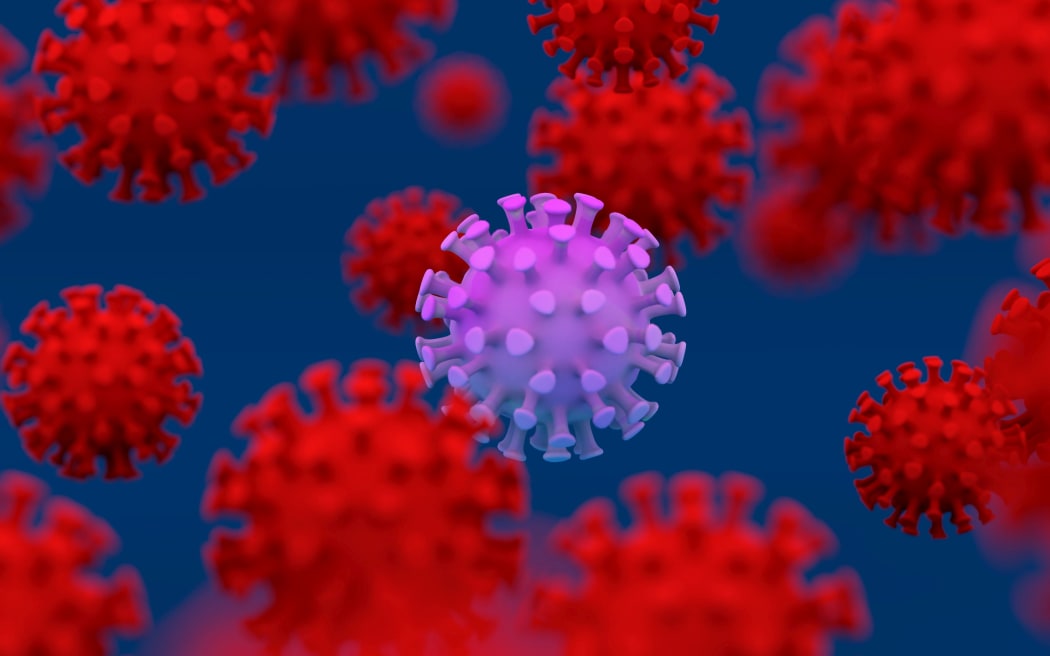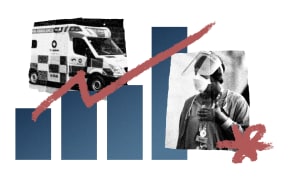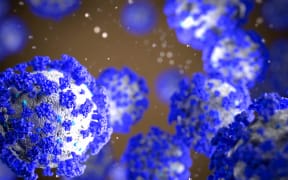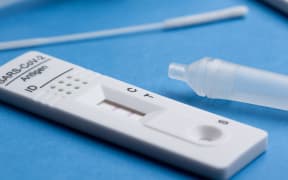
The Covid family tree is a confusing one. But JN.1 was like a big, strong branch. And now, it is dense with twigs. (Illustration image) Photo: 123RF
If you have caught Covid-19 in Aotearoa New Zealand in 2024, chances are you were infected with Omicron subvariant JN.1.
The subvariant made headlines just before Christmas, and by March accounted for 98 percent of sequenced cases.
But its reign is coming to an end, as one of its descendants has given rise to a new subset of variants, referred to as "FLiRT" or, in some cases, "FLip" (based on the technical names for their mutations).
The Covid family tree is a confusing one. But JN.1 was like a big, strong branch. And now, it is dense with twigs.
The Covid family tree
We know SARS-CoV-2, the virus which causes Covid, has a propensity for big, evolutionary leaps.
In early 2022, the Omicron variant replaced Delta as the dominant strain. On an individual level, Omicron was less dangerous, but more transmissible.
Omicron subvariants have circulated since then, thanks largely to advantageous spike protein mutations. (The spike proteins, protruding like needles from a pincushion, help the virus infect human cells.)
From Omicron came BA.2.86, nicknamed Pirola, and then JN.1. It did not take long for the fast-spreading JN.1 to out-compete other lineages in New Zealand, as it had overseas.
Environmental Science and Research's (ESR) latest Covid-19 genomics report, from 12 April, noted 98 percent of sequenced cases were JN.1 or a JN.1-derived lineage. The only other subvariant detected in the last fortnight was BA.2.86 - JN.1's parent.
The latest wastewater results also showed almost complete replacement of older lineages by JN.1.
Enter: FLiRT
ESR has been tracking FLiRT mutations in its public report for about a month, science leader, genomics and bioinformatics Dr David Winter told RNZ.
"In the last few weeks, emerging lineages have both been rising reasonably quickly as a proportion of all cases, with the fastest growing of these having a growth advantage of about 5 percent per day over JN.1."
This meant the lineage was about 5 percent better each day than JN.1 at infecting people. (This is still below the level expected to have a substantial impact on caseloads.)
While JN.1 was still dominant, JN.1.16, KP.2 and KP.3 were creeping onto surveillance charts.
At the week ending 5 May, the three named variants accounted for just over 20 percent of all Covid viruses sequenced from wastewater.
Is it causing a wave?
"It's a contributing pressure to case numbers, but not enough by itself to spur a variant-driven wave," Winter said.
The presence of SARS-CoV-2 in wastewater has spiked since 21 April. Hospital admissions have also increased, with the rolling seven-day average at 27 on 5 May, up from 22 the Sunday prior, and 20 the one prior to that.
Covid-19 modeller Professor Michael Plank said it looked as though FLiRT variants were driving "a bit of growth" in Covid numbers internationally. "There are signs in the latest data that this is probably starting to happen in New Zealand as well."
While the growth rate of these variants was not as large as that of JN.1 around Christmas, the colder weather could give the virus a "helping hand", Plank said.
"It's possible we'll see a wave that is similar in size to the summer one, but still much smaller than the waves we had in 2022 and 2023."
Should we care?
About the new names? Not really, said epidemiologist Michael Baker.
"It's still the same virus. Don't get caught up in the clever names," he said.
The takeaway was that this was how the virus would behave in the human population for the foreseeable future, he added. "The virus only cares - not that it has consciousness - about one thing: making more copies of itself."
It is obvious at this point the virus is going to "keep creating waves".
"There's not much evidence it's getting more dangerous or more infectious necessarily. The driver [of mutations] is evading existing immunity, meaning it becomes more infectious at a population level. But it's not changed how it's transmitted in the air."
It is impossible to say whether the new subvariants cause different symptoms from prior ones.
"The greatest variability isn't between lineages, it's between people," Baker said. "It's more about your state of immunity when you get infected. I don't think it's helpful to try to assign different symptoms to different lineages."
What's next?
A Covid wave ends when the susceptible population decreases, making it harder for the virus to find a host. People get immunity from either prior exposure to the virus, or vaccination.
"Obviously, it's preferable to get immunity from vaccination, which is why people need to keep getting boosters, particularly if they're at-risk," Baker said.
As we head into winter, more people will be getting sick in general, thanks to other common coronaviruses and influenza.
Covid would remain an additional burden on the health system, Baker said. Covid patients in hospitals must be managed more intensely, and pose a risk to other, at-risk patients.
"A lot of people are acquiring Covid in hospital, and people are dying with Covid in hospital when they didn't go in with it."
Long Covid - when the effects of the disease last longer than 12 weeks - remained one of Baker's biggest concerns.
Free Covid rapid antigen tests (RATs) were available to collect until at least 30 June, 2024.






